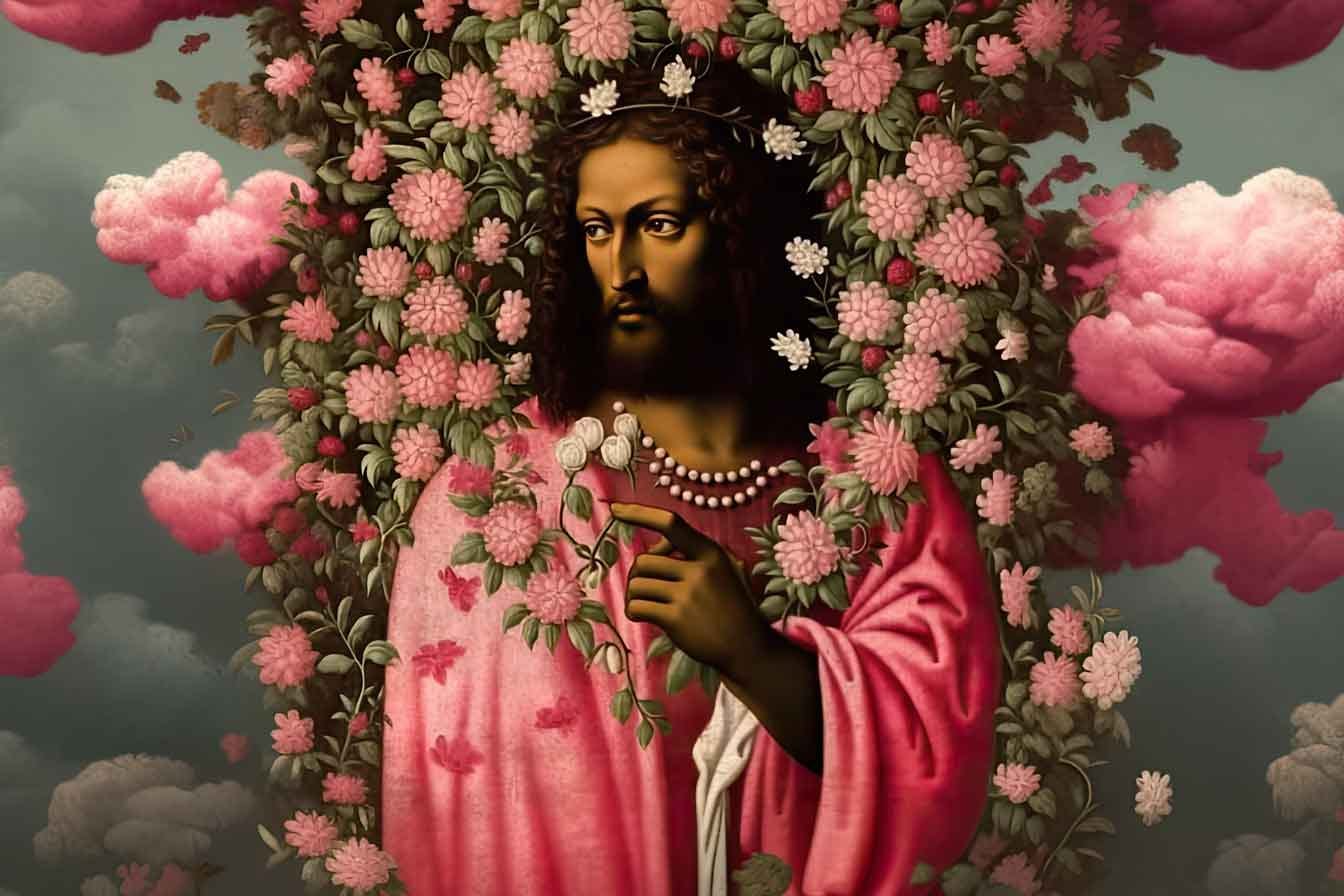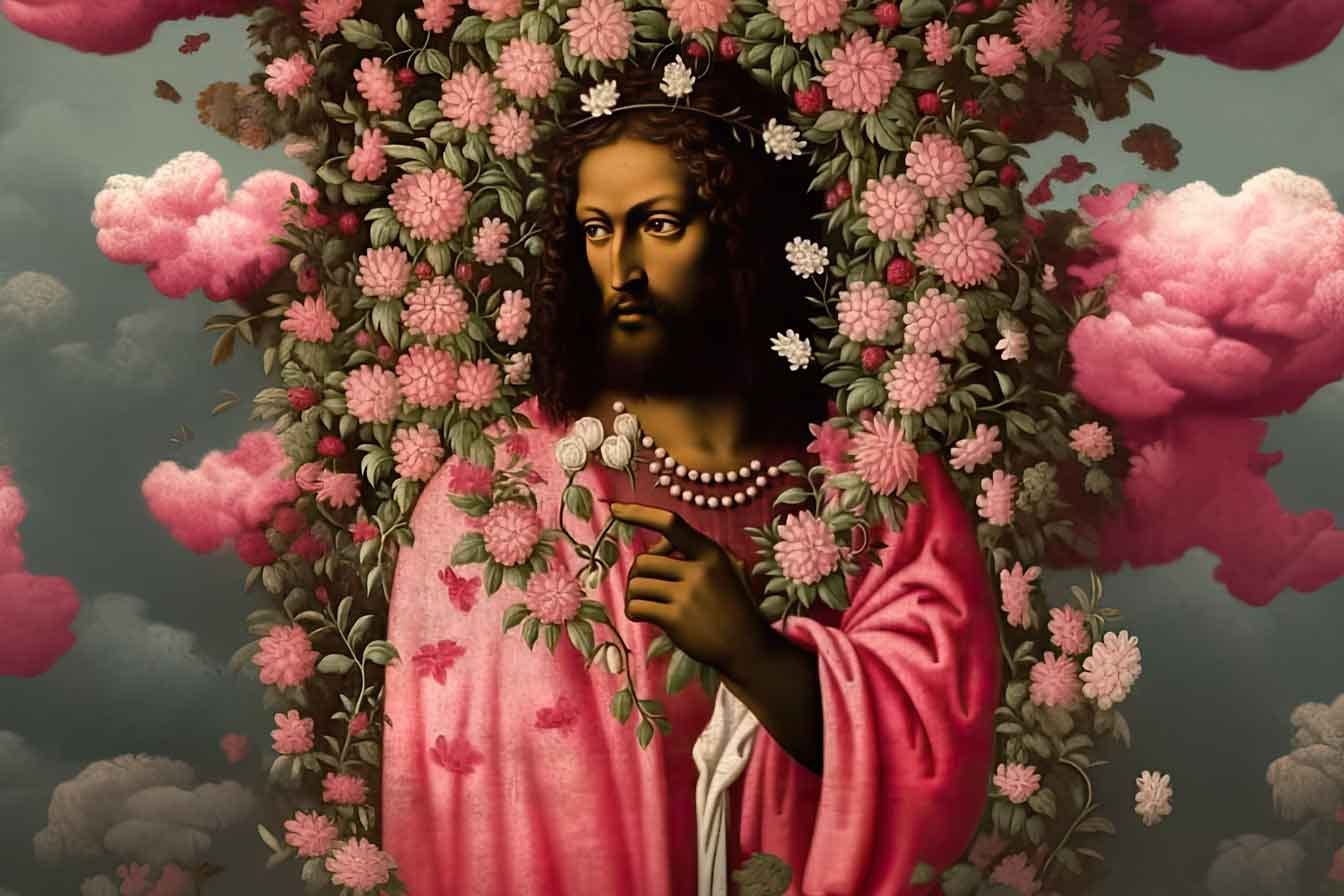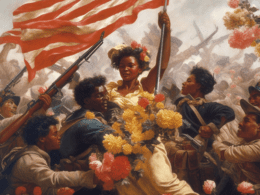
Part I – “Divine Maternity: Asherah, Virgin Birth, and Jesus’ Beatitudes”
Asherah, a deity from Near Eastern culture, symbolized motherhood and fertility and was revered in various ancient cultures. For thousands of years, she represented the power of the divine feminine to devout followers and her worship often included narratives of miraculous events and interventions. Asherah’s roots in Near Eastern cultures, especially within the Canaanite religion, depict her as a powerful mother goddess, linked to the god El, who is also claimed as the god of Israel. Traces of Asherah and the values she represented can be seen in the subtext of most Judeo-Christian teachings, particularly in the emphasis on wisdom, which in Hebrew is “Chokhmah” and often personified as female.

Worship of Asherah, which was later suppressed in Judeo-Christian traditions, indicates an early societal recognition of feminine deities. The transition of her veneration into the early Judeo-Christian context represents a blend of cultural and religious syncretism, echoed in the story of Jesus, which can be seen as incorporating elements of matriarchal symbolism and values. For instance, the role of women in Jesus’ life and ministry, notably figures like Mary Magdalene and his mother, Mary, reflects a certain reverence for feminine influence and wisdom. This recognition of the divine feminine and the more egalitarian views on gender roles contrast with the patriarchal leanings that characterized many later religious developments.

In addition, the Virgin Birth underscores a universal recognition of the feminine as not just a physical mother but a symbol of spiritual strength, purity, and the very source of life and salvation. This theme, recurring in various forms across different cultures and religious traditions, highlights the enduring human fascination with and reverence for the mysteries of life, creation, and the role of the feminine in the cosmic order.

In various ancient African religions, including those of Kemet (ancient Egypt), goddesses often held significant roles. For instance, Isis in Egyptian mythology was revered as the mother of Horus and was often depicted in a maternal role, nurturing the young god. Similarly, as the Mother of Jesus, Mary represents a powerful image of the divine feminine, embodying physical motherhood, spiritual nurturance, compassion, and unconditional love. Her revered status in Christianity reflects a recognition of feminine qualities as integral to the divine narrative.

The concept of a virgin birth, devoid of paternal involvement, can also be seen as an elevation of feminine agency in the divine process. It symbolically places the feminine at the center of a miraculous and salvific event. In some ancient matriarchal or matrilineal societies, the divine feminine intrinsically linked birth and creation. Goddesses were often creators or mother figures, central to the cosmology and spiritual narratives of these cultures. The divine feminine in these contexts is typically associated with life, fertility, renewal, and the cyclical nature of existence. This aspect transcends physical motherhood, encompassing spiritual guidance, wisdom, and the underlying life force.

The divine feminine, often linked to concepts of life, healing, and nurturing, finds a megaphone in Jesus’ teachings, which consistently emphasize love, compassion, and forgiveness – traits that transcend rigid patriarchal norms. For instance, the call to “Love your enemies and pray for those who persecute you” (Matthew 5:44) reflects a deep compassion and understanding of humanity, qualities often associated with the nurturing aspect of the divine feminine.

The shift in focus from external ritualistic practices to internal spiritual virtues in Jesus’s teachings, as well as the emphasis on qualities traditionally associated with the divine feminine, suggest a more nuanced understanding of spirituality in the New Testament. This perspective embraces a more holistic and inclusive approach to religious practice, one that tries to honor both the masculine and feminine aspects of the divine.

The narrative of Jesus in the New Testament and the teachings typically associated with Asherah weaves together a rich and complex tapestry of theological and cultural influences, drawing from the depths of ancient civilizations, however, it is in many ways still masked in the patriarchy of its overarching culture.

The Beatitudes (Matthew 5:3-12) begin with blessings for those who embody spiritual virtues that were not typically celebrated in society. This section reflects Jesus Christ’s radical approach to spirituality and ethics, which significantly departs from traditional Jewish law. The Beatitudes offer profound ethical teachings that emphasize the significance of inner moral virtues over mere external observances. Jesus’s teachings in these passages underscore qualities such as humility, mercy, and a deep-seated pursuit of righteousness. For instance, “Blessed are the poor in spirit, for theirs is the kingdom of heaven” (Matthew 5:3) and “Blessed are the meek, for they shall inherit the earth” (Matthew 5:5) reflect a profound inversion of societal values, placing the highest spiritual worth on traits like humility and gentleness. This approach contrasts sharply with the prevailing societal norms that often value power, wealth, and status.

As we explore the depths of history and its impact on the present, our journey becomes increasingly captivating. In the next installment of my Christmas series, we will delve further into how the ancient narratives intertwine with Africa, specifically Ancient Kemet and Ethiopia, as well as, digging further into the Gnostic texts.














